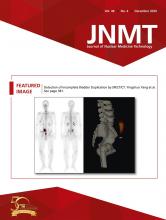Abstract
The digital PET/CT scanner with digital photon-counting technique promises a shorter scan time, improved small-lesion detectability, and reduced radiation dose for the PET and CT portions of the exam while improving image quality. Methods: In this single-institution retrospective review study, 84 participants who had undergone PET/CT on both analog and digital scanners were analyzed. The aim was to evaluate the impact of image field of view (FOV) and body mass index (BMI) on the digital compared with the analog PET/CT scanners. The participants were categorized into different groups based on their BMI. Total scan times, 18F-FDG doses, and dose–length products (DLP) were collected and compared. Image quality was also assessed by certified nuclear medicine physicians and graded on a scale from 1 to 5. Results: In the skull–to–mid-thigh FOVs, the digital scanner had a scan time shorter by 37% (P < 0.001), a 18F-FDG dose lower by 16% (P < 0.001), but only an 8% reduction in DLP (P = 0.2). In the head-to-toe FOV cases, the digital scanner showed reductions in scan time (33%; P < 0.001), 18F-FDG dose (13%; P < 0.001), and DLP (19%; P < 0.001). When BMI was accounted for, the digital scanner had a scan time shorter by 33% (P < 0.001), as well as a reduced DLP (P < 0.001) and 18F-FDG dose (P < 0.001), with the most prominent changes being in the overweight and obese participants. Image quality was also improved by the digital scanner, with a score of 4.5, versus 4.0 for the analog scanner. Conclusion: The digital scanner has a shorter scan time and lower DLP, requires a lower 18F-FDG dose, and provides improved image quality when compared with the analog scanner. The most impactful difference in scan time, DLP, and 18F-FDG dose were observed in obese and overweight participants.
Footnotes
Published online Sep. 4, 2020.







